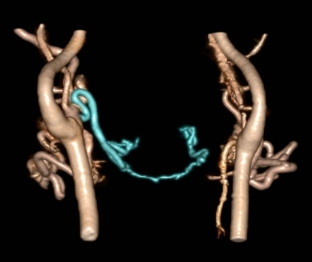Currently, most people associate plastic surgery exclusively with surgical methods for correcting age-related changes in appearance, but this is far from the case. Aesthetic surgery deals with similar problems, but there are other equally complex and important areas of plastic surgery. Correction of serious body defects resulting from injuries or congenital anomalies is also performed by plastic surgeons, and microvascular surgery is an integral direction in this field of medicine. When and why is vascular plasty performed, and what are the features of this operation – read on estet-portal.com.
Peculiarities of using an autovenous insert for vascular plasty
In clinical microvascular surgery, there are often problems associated with insufficient vessel length. Similar situations occur with finger replantation or microvascular free flap grafts. The resulting defects in the veins and arteries do not allow for surgical intervention as planned. To eliminate such problems, plastic vessels are widely used today. Such surgery is a very complex job and can only be performed by highly qualified surgeons who have sufficient experience in performing various manipulations on the vessels.
Vascular plasty:
- features of using autoveins for vascular plasty;
- places for taking autovenous inserts for vascular plasty;
- Mistakes in vascular plasty and ways to prevent them.
Peculiarities of using autoveins for vascular plasty
The most common plastic material for vascular plasty are autoveins. The subcutaneous venous network is very well developed in the human body, and taking a venous insert is not particularly difficult, and adverse consequences almost never occur in the area of autovein sampling.
A feature of the venous insertion in vascular plasty with autoveins is the need for its reversion, which is associated with the presence of a valve apparatus in the structure of the veins.
But it is important to remember that due to the reversion of the insert, there may be a mismatch of the sewn ends in diameter. During reperfusion of an autovein, first of all, retrograde blood flow is started in it, and only then - proximal.

Locations for taking autovenous inserts for vascular plasty
The following most typical places for taking autovenous inserts for vascular plasty are distinguished:
- great saphenous vein – from the oval fossa to the medial malleolus, vessel diameter – 3-5mm;
- small saphenous vein – from the popliteal fossa to the medial malleolus, vessel diameter – 3-4mm;
- cephalic vein – from the cubital fossa to the subclavian vein, vessel diameter from 2 to 4 mm;
- main vein – from cubital fossa to brachial vein, vessel diameter 4-5 mm;
- external jugular vein – from the angle of the lower jaw to the subclavian vein, vessel diameter 4-6 mm;
- superficial epigastric vein – from the oval fossa to the umbilical region, vessel diameter 2-3 mm.
Mistakes in vascular plasty and ways to prevent them
Mistakes that the operating surgeon may make when performing vascular plasty can be prevented. The most common mistakes are the assumption of partial torsion of the graft when using autovenous inserts of great length, as well as the kink of the vessel that occurs when the length of the autovenous insert is inaccurately calculated. Such errors can be seen only after restoration of blood flow, as a result of which it may be necessary to repeat the anastomosis after correcting the error. To determine the true length of the venous insert and ligate its additional branches, you simply need to fill the vessel with physiological saline, after applying microvascular clamps to the ends of the autovein. With this simple technique, rotation of the vessel is eliminated and the true length of the autovenous insert is determined.







Add a comment